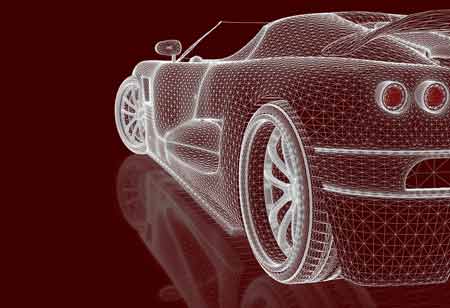THANK YOU FOR SUBSCRIBING
THANK YOU FOR SUBSCRIBING
Be first to read the latest tech news, Industry Leader's Insights, and CIO interviews of medium and large enterprises exclusively from Auto Tech Outlook

By
Auto Tech Outlook | Monday, March 15, 2021
Stay ahead of the industry with exclusive feature stories on the top companies, expert insights and the latest news delivered straight to your inbox. Subscribe today.
The extent to which technology has pervaded the automotive industry is undeniable. However, despite the fact that the term "smart" is bandied about a lot these days, there has been a noteworthy increase in the use of new technologies in the automotive industry.
Fremont, CA: 5G technology has enormous potential to alter the future of transportation. For example, Vehicle-to-vehicle and vehicle-to-infrastructure communication could significantly make roadways safer and more environmentally friendly. In addition, new business models, like on-demand transportation, will be enabled in the future since roads will be equipped with sensors to allow for smooth communication.
The Automotive Industry and 5G Technology
In most regions of the world, road accidents continue to be the top cause of accidents. Blindspot detection issues and slow brake response times are two of the most common causes of accidents.
As the frequency of incidents has increased, there has been a greater focus on road safety. Authorities have taken several steps to solve this problem, including improving road infrastructure and rationalizing traffic signals. Currently, the focus is on reducing fatalities by utilizing cutting-edge technology.
As a result, governments are turning to cutting-edge technology to aid in the reduction of human-caused errors.
The Journey Ahead
The car industry, which manufactures both private and public transportation systems, would benefit greatly from the emergence of next-generation wireless networks. Increased control and visibility over transportation systems will be feasible when such network technology is integrated into autos.
Manufacturers should consider establishing end-to-end communication within and across cities. The following items should be included in communication support:
Vehicle-to-infrastructure (V2I): Vehicles should be designed to connect with sensors on traffic lights, roadways, and bridges in such systems.
Vehicle-to-vehicle (V2V): In such systems, manufacturers should concentrate on developing automobiles that can communicate directly with one another.
The automobile industry's scope would expand beyond producing fast and comfortable cars to include additional technological capabilities. As a result, manufacturers will need to collaborate with IT firms to improve the characteristics of their goods.
The nature of the futuristic automobile will be dynamic, meaning that vehicles will communicate with one another to avoid collisions.
The relentless tornado of upheaval buffets the automotive industry through four fundamental themes that would radically alter automakers' approach to vehicle development. These are some of the current trends:
• Electrification
• Connectivity
• Mobility that is shared
• Autonomous Vehicles
OEMs have traditionally worked primarily with automakers. On the other hand, high-tech players are making inroads into the automotive market with their technically competent solutions. As a result, car manufacturers should expect to see more tech alliances and project-based collaboration in the future.
 Copyright © 2025 AutoTech Outlook. All Rights Reserved | Privacy Policy | Subscribe | Sitemap | About us | Feedback Policy | Editorial Policy
Copyright © 2025 AutoTech Outlook. All Rights Reserved | Privacy Policy | Subscribe | Sitemap | About us | Feedback Policy | Editorial Policy 



